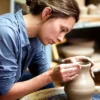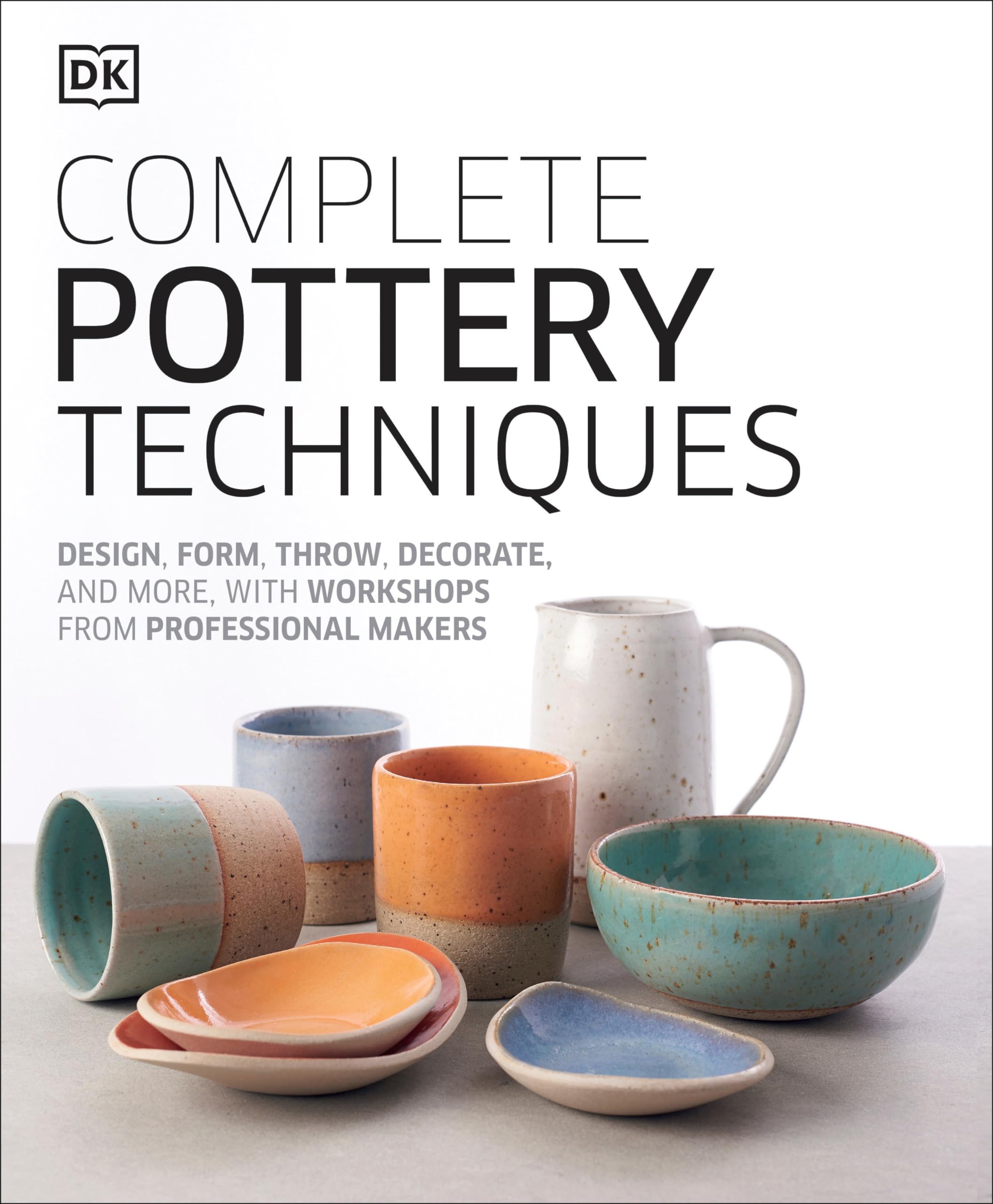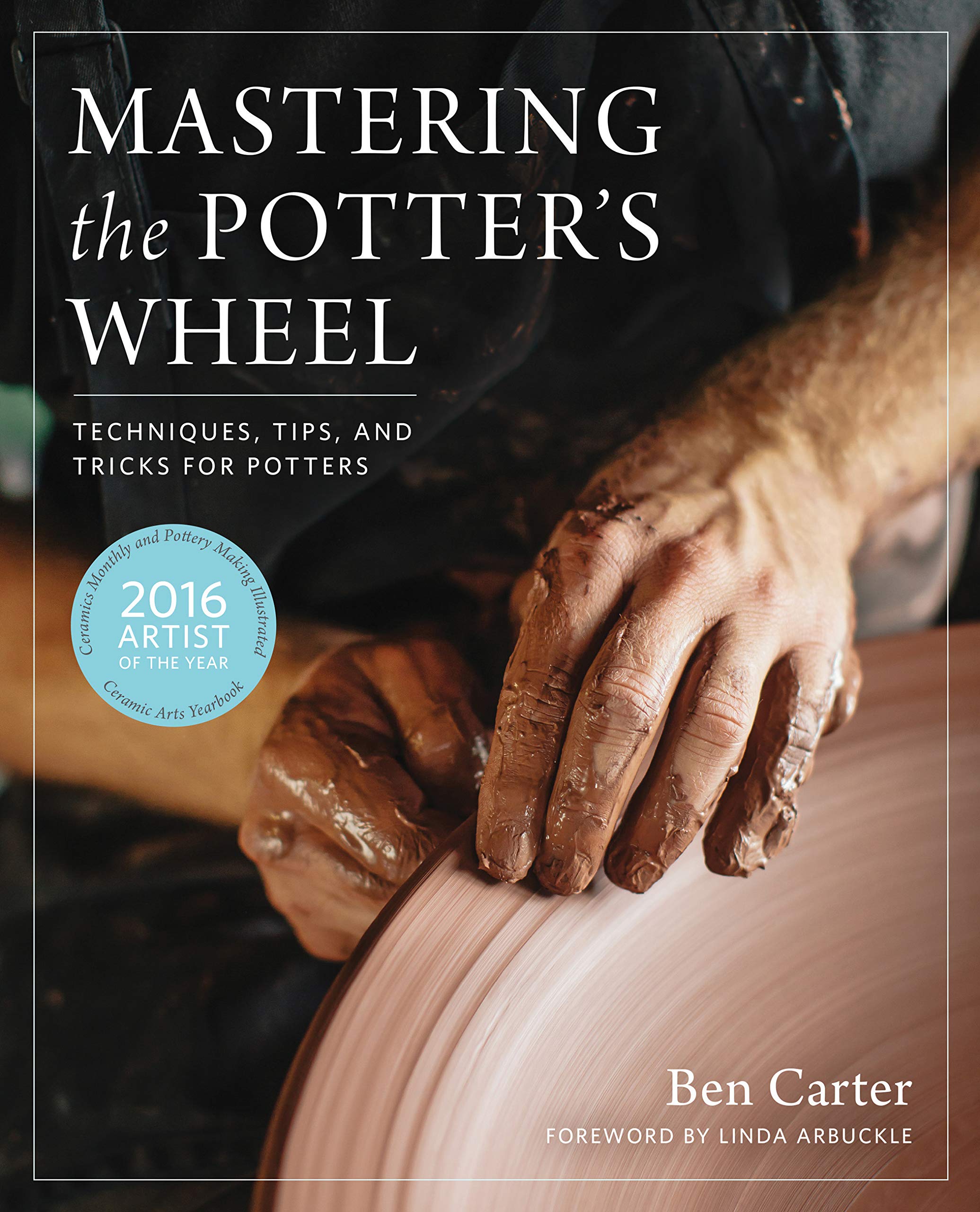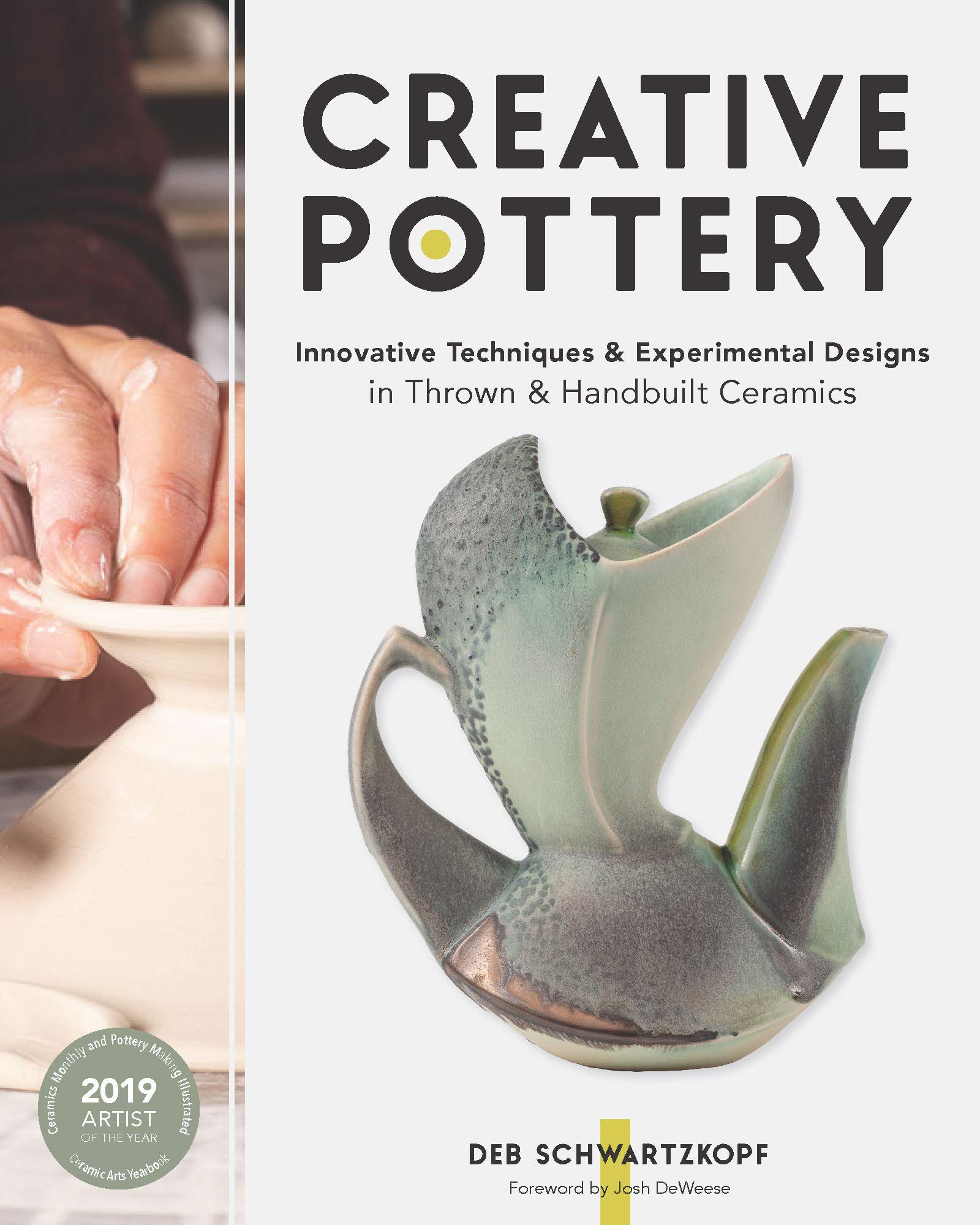Pottery has long been cherished for its blend of artistry and functional craftsmanship, and at the heart of this craft lies the skill of wheel throwing.
This technique involves shaping clay on a potter’s wheel, allowing for the creation of symmetrical and smooth ceramic pieces.
Books dedicated to wheel throwing techniques offer invaluable insights for both beginners and seasoned potters, providing guidance on everything from the fundamentals to advanced methodologies.
When selecting a book on wheel throwing techniques, the level of detail and clarity offered by the author is paramount.
Look for books that not only provide comprehensive step-by-step instructions but also include illustrations or photographs to visually guide you through the process.
Author credibility and reader reviews can also be good indicators of the book’s quality.
It’s important to choose a book that matches your skill level, whether you’re just starting out or looking to refine your techniques.
We explored numerous publications focused on wheel throwing to identify those that best equip readers with the skills needed to improve their craft.
Best Wheel Throwing Techniques Books
As pottery enthusiasts, we understand the value of mastering wheel throwing techniques.
Our curated list features the top books that can enhance your skills and inspire your creativity on the wheel.
Complete Pottery Techniques
An excellent choice for both beginners and seasoned potters, this book offers comprehensive insights and practical guidance that enrich your pottery skills.
- Thorough coverage of techniques with clear instructions
- Numerous illustrative photos enhance learning
- Suitable for all skill levels
- Tedious for those seeking only specific techniques
- Weighty for a paperback
- In-depth sections can feel overwhelming
When flipping through the pages of Complete Pottery Techniques, we found it packed with invaluable tips and comprehensive instructions—perfect for refining our skills.
The book’s detailed approach catered to both our beginner experiments and more advanced projects, allowing us to explore a wide range of techniques.
Its step-by-step processes, complete with high-quality images, made the entire experience highly engaging and informative.
One of the standout aspects was the inclusion of workshops from professional makers.
This feature provided us with insights into expert practices, enriching our perspectives on pottery creation.
The visual examples served as both motivation and guidance, making complex techniques more approachable.
Although we enjoyed the depth of knowledge, some sections could be slightly overwhelming, especially for those just wanting to focus on a particular area.
Nevertheless, it’s a worthy investment for anyone passionate about pottery who is eager to expand their craft.
Mastering the Potter’s Wheel
This book is an invaluable resource for both beginners and seasoned potters looking to enhance their wheel-throwing skills.
- Clear and detailed instructions
- High-quality photographs enhance learning
- Comprehensive for beginners and experienced potters
- Hardcover may be heavy for some
- Focus on basics may not appeal to advanced potters expecting complex projects
- Price may be higher than less comprehensive guides
“Mastering the Potter’s Wheel” is a beautifully crafted book that combines detailed instructions with vivid photographs, making it an essential addition to any potter’s library.
As we explored this book, its clear explanations and visual aids stood out, providing an engaging learning experience for mastering wheel throwing techniques.
The exercises outlined are particularly beneficial for building foundational skills.
The advice on handling clay effectively helps demystify the process for beginners, while more experienced potters may find valuable tips to refine their technique.
We appreciated the balance between text and imagery, which reinforces key concepts and provides visual learners with the support they need.
In using this book ourselves, we found that the structured approach allows readers to tackle wheel throwing with confidence.
It offers clarity and precision, suitable for both self-directed learning and complementing studio classes, making it a versatile resource in the world of pottery.
Amazing Glaze
A must-have for pottery enthusiasts eager to enhance their glazing techniques with comprehensive recipes and firing tips.
- Comprehensive glazing techniques explained clearly
- Visually impressive with detailed photographs
- Suitable for both beginners and advanced potters
- Focuses mainly on glazing, may not cover other pottery aspects
- Can be a bit challenging for total beginners
- Not a portable size for on-the-go reading
We’ve delved into Amazing Glaze, and it’s clear that this book provides a detailed journey through the art of glazing.
The vibrant illustrations are not only captivating but also practical, guiding us through the steps with finesse.
We found the techniques described to be both comprehensive and accessible, making glazing less intimidating.
The structure of the book makes it an invaluable resource in our pottery toolkit.
It’s both a functional guide and a visual treat, balancing informative content with stunning photography.
This book does a great job of breaking down complex glazing techniques into understandable segments.
It’s worth mentioning that while the focus is mainly on glazing, which gives it depth, it might not be an all-encompassing pottery guide.
The hardcover format provides durability, though it makes it less convenient to carry around.
Despite these aspects, the content richness ensures it’s a valuable addition to our creative library.
The Encyclopedia of Pottery Techniques
A comprehensive guide that’s both informative and artistically inspiring for pottery enthusiasts.
- Clear and detailed visual instructions
- Broad range of techniques covered
- High-quality images and paper
- Challenging to read on digital devices
- Not overly in-depth on each topic
- May be heavy for some users due to its size
Our experience with The Encyclopedia of Pottery Techniques has been enlightening.
The book provides a visual feast with its excellent imagery, making the learning process enjoyable and effective.
For anyone looking to expand their pottery skills, this book offers a valuable array of techniques, each explained clearly.
While its extensive coverage is impressive, those seeking deep dives into specific areas might find it a bit surface-level.
Despite this, the step-by-step instructions ensure that both beginners and seasoned artists can find new inspiration and refine their skills.
In terms of usability, the paperback version shines, though the digital format could be more user-friendly.
Still, for hands-on learning and easy reference, it stands out as a must-have in our pottery book collection.
Creative Pottery: Innovative Techniques
This book is an excellent choice for potters looking to enhance their creativity with both wheel and handbuilt ceramics.
- Comprehensive guidance for both beginners and experienced potters
- Inspiring design ideas and techniques
- Clear, step-by-step instructions with helpful visuals
- Templates require resizing before use
- May be overwhelming with the amount of information
- Not all design ideas are universally appealing
Our experience with “Creative Pottery: Innovative Techniques” is deeply positive.
We find it provides a substantial amount of information, accommodating enthusiasts at varying skill levels.
The detailed instructions are meticulously crafted, making complex projects approachable.
The book excels in sparking creativity.
Whenever we feel stuck in a design rut, flipping through its pages offers a fresh perspective.
The fusion of wheel and handbuilding techniques opens up a wide range of possibilities for pottery experiments.
While the book is largely beneficial, preparing the templates for use can be a bit of a hassle.
Readers may need some additional effort to adapt certain designs to their style.
Despite this, the wealth of inventive ideas makes it an invaluable resource for hobbyists and professionals alike.
Buying Guide
When choosing a book on wheel throwing techniques for pottery, we should consider several key elements to ensure we’re getting the most useful resource.
Author Expertise
Books authored by experienced potters or educators often provide well-rounded guidance.
Let’s look for authors who have credible backgrounds in pottery.
Content Depth
Some books focus on beginner techniques, while others might dive into advanced skills.
Identifying our skill level will help us choose correctly.
| Skill Level | Recommended Book Type |
|---|---|
| Beginner | Basic Techniques |
| Intermediate | Multi-level Approaches |
| Advanced | Innovative Methods |
Visual Aids
High-quality images and illustrations can significantly enhance our learning.
Photographs of each step make complex techniques easier to understand.
Layout and Organization
An organized layout with clear headings and concise explanations helps us navigate the book efficiently.
A good index is a bonus for quick referencing.
Reviews and Ratings
Examining user reviews can give us insights into real-world applicability and satisfaction levels.
It’s wise to consult several sources for balanced opinions.
Price vs. Value
Comparing prices is essential, but evaluating the value the book offers is equally important.
We should reflect on whether the content justifies the cost.
Frequently Asked Questions
In this part, we will address common queries about pottery wheel techniques, focusing on self-teaching, improving skills, choosing clay, understanding different ceramic methods, and recommending books for beginners.
Our insights are rooted in foundational knowledge meant to assist those just starting out.
Can I teach myself to use a pottery wheel?
Yes, many individuals successfully teach themselves how to use a pottery wheel.
Utilizing online resources and instructional books can greatly aid in self-learning.
Developing a practice routine is key.
With dedication and patience, we can make significant progress.
How do I get better at throwing pottery?
Improving pottery skills involves regular practice and seeking feedback from experienced potters.
Attending workshops or classes can also enhance our techniques.
Investing time in trying various methods and working with different types of clay can help refine our proficiency.
What is the best clay for wheel throwing beginners?
Beginners often find earthenware clay to be more manageable due to its plasticity and forgiving nature.
Stoneware, if well-prepared, is another good option.
It is beneficial for us to test small amounts from different types to see which we find easiest to handle.
What is the difference between wheel throwing and handbuilding in ceramics?
Wheel throwing involves shaping clay on a spinning wheel, primarily used for creating symmetrical forms like vases or bowls.
Handbuilding techniques include pinching, coiling, and slab construction, allowing us more freedom in creating unique shapes without the need for a wheel.
What are the top instructional books for learning pottery wheel throwing techniques?
Some recommended books include “The Beginner’s Guide to Wheel Throwing” by Julia Claire Weber and “Mastering the Potter’s Wheel” by Ben Carter.
These books provide detailed instructions suitable for those new to this craft.
Which beginner-friendly books on ceramics offer the most comprehensive guidance for wheel throwing?
Books such as “Clay: A Studio Handbook” by Vince Pitelka and “The Potter’s Complete Studio Handbook” by Kristin Muller and Jeff Zamek are excellent resources.
These guides offer comprehensive instructions covering a variety of techniques to help us gain a solid understanding of wheel throwing.







